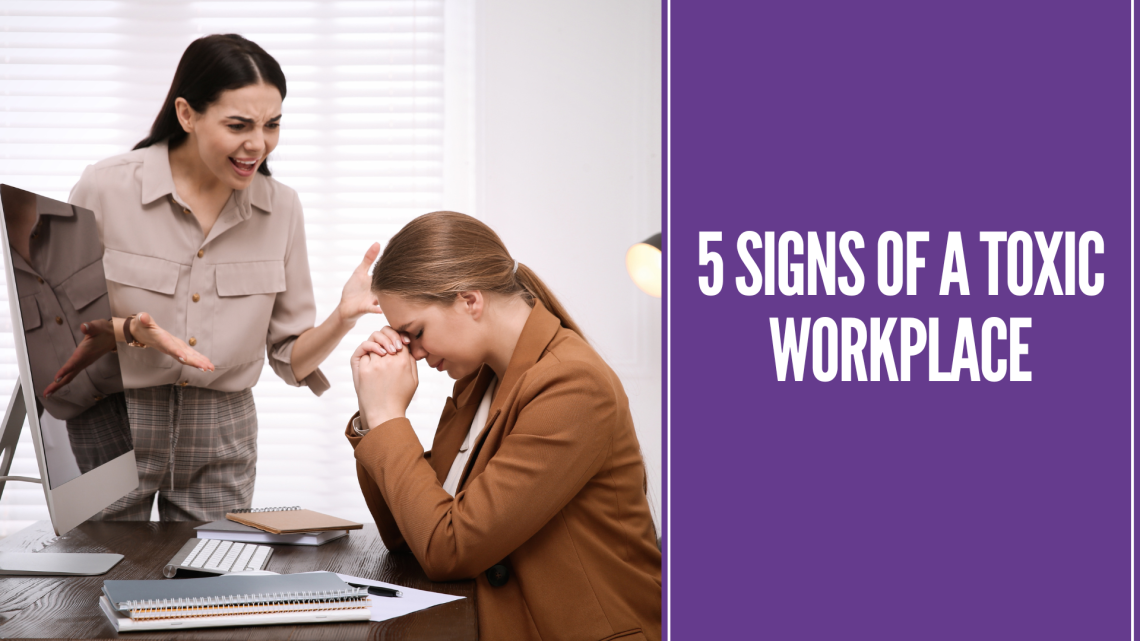
According to Future Forum survey results revealed yesterday, more than 40% of desk workers are suffering from burnout. The data also highlighted the strong correlation between age and gender with regard to burnout rates; women, in particular, were far more likely (46%) to experience this feeling compared to men (37%). In addition, younger people seemed much more prone towards experiencing such feelings when compared with their older colleagues - 48% of those under 30 reported being burned out at work as opposed to only 40% of those aged 30+.
How to spot the red flags and avoid being trapped in a toxic workplace?
Below we offer 5 criteria upon which to recognize toxicity at work:
Sign #1: Vague or unrealistic company goals and values
Establishing clear goals is crucial for a thriving and successful work environment. Everyone should be aware of the company's objectives and comprehend their responsibility in attaining them, which can encourage employees to feel inspired and driven.
A work environment that encourages healthy communication and positive dialogue should openly discuss its values, attitudes and beliefs.
Before joining the team, familiarize yourselves with what your workplace culture has to offer so that you are able to make an informed decision about whether or not it is the right fit for you.
In stark contrast, in a toxic workplace environment, it's impossible to understand the true corporate culture. Values and convictions are kept hidden and never expressed openly.
What's more, workspace toxicity is usually based on the choice to prioritize higher profits or customer gratification over employee welfare. This kind of environment can produce enormous amounts of stress and pressure that have a negative effect on worker morale and overall health - ultimately creating an intimidating atmosphere for everyone involved.
Sign #2: Lack of respect from the management
A workplace with respect and consideration towards its employees is a crucial element for success. Employees must be seen as worthy individuals. Decisions should always be made together, considering all involved parties’ opinions; respecting others at work creates an environment of collaboration and support that will ultimately lead to better outcomes.
Conversely, toxic work environments may be marked by an absence of transparency and collaboration; higher-ups can make decisions without considering the opinions or suggestions of their colleagues. This sense of power imbalance will cripple employee autonomy and creativity, consequently creating a dismal working environment.
In a hostile work environment, employees tend to feel that their supervisors and managers only treat them as resources for getting the job done. As tasks change from department to department, so do their roles; therefore, causing instability in their work. Rudeness and lack of respect are pervasive characteristics of a toxic atmosphere which inevitably lead to decreased productivity and employee satisfaction levels.
Sign #3: No growth potential
Nurturing personal growth is an absolute must in any company. To create a healthy environment, supervisors ought to offer helpful feedback and grant employees the freedom to make decisions on their own - within pre-established parameters of course! When staff are offered additional autonomy, it leads to more creative solutions with greater outcomes. On the other hand, when workers are burdened by a negative work atmosphere they experience limited decision-making power; only one method of completing tasks can be used as determined by higher-ups or lone individuals that have little tolerance for experiment from what's been set out.
Doing the same job on a daily basis can lead to monotony, lack of motivation, and a sense of insignificance. Employees can feel like there is no reward for competency or effort as there may be limited chances for growth in companies that promote based on seniority instead of skill or capability. To make matters worse, training opportunities, such as attending workshops or conferences are often scarce which only amplifies the feeling of being stuck in dead-end positions with nowhere to go.
Sign #4: Strained relationships between employees
Positive relationships with colleagues are essential for maintaining a productive and healthy work atmosphere. Toxic coworkers, however, can create an environment of negativity that makes it difficult for employees to perform their jobs at the highest level.
Even if your coworkers aren't toxic, the atmosphere in which you all work could be. A dysfunctional workplace can encourage one to repress emotions and dodge conversations. Consequently, over time, the relationship between yourself and your colleagues may morph into a harmful dynamic.
Some phrases to avoid using, especially with a remote working colleague: "What are you doing all day long?", "I just care too much to work from home.", "I suspect I can give you a call whenever?" etc.
Sign #5: Conflicts are inadequately managed
It's only natural that disagreements can arise in the workplace, but it is essential to manage them in an efficient and productive way. Conflicts are simply differences of approach, attitude, or opinion; they should be accepted as a normal part of any working environment.
A productive workplace shouldn't deny the existence of conflicts. People should be allowed to communicate their feelings confidently and thoughtfully, always bearing in mind that the aim is to find a mutually beneficial solution. By approaching disagreements with this positive attitude, we can ultimately achieve harmony at work.
In contrast, a harmful work environment often overlooks conflicts. Without instruction on how to deal with them, these disputes become battles that must be won at all costs.
Conclusion
Nowadays, toxicity in the workplace is an all-too-frequent issue. From extreme to subtle forms, this problem elicits physical and emotional strain on employees – as well as financial losses for employers due to decreased output and time off from work.
To tackle this problem, we must work diligently to cultivate a positive and supportive atmosphere in the workplace and beyond: for instance joining a supportive community.
Although one individual might not be able to transform an entire organization alone, they can ensure their own well-being is preserved.
Mental health, Hybrid Work & Productivity are some of the many interesting topics we'll explore during our Global Conference 2024.






